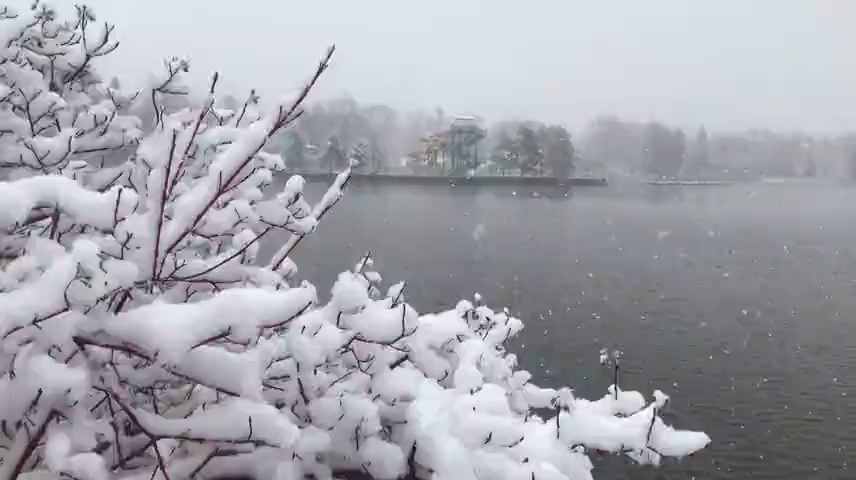Farmers' Almanac says Colorado will be a 'hibernation zone' this winter. Can we trust it?

The Farmers' Almanac winter weather prognostication that Colorado will be a "hibernation zone, glacial, snow-filled'' makes for attention-grabbing headlines. But is the almanac more farce than fact, more truth than tale?
That depends on who you ask.
Farmers' Almanac says its "longtime fans ... who follow our weather predictions" claim those predictions are accurate about 80% to 85% of the time.
Not exactly a claim backed by science, but give the August edition that included its winter weather prognostication credit for offering up this eye-catching warning: "Shake! Shiver! Shovel!''
Marketing aside, Colorado state climatologist Russ Schumacher based at Colorado State University said professional climatologists, meteorologists and the like know the media interviews are coming this time of year and, for the most part, pooh-pooh the almanacs' predictions.
"I think we try not to think about them,'' he said. "They attract attention and get people talking about it. But a lot of times what they do is use general phrases that are true most any year. And there really isn't any way to test scientifically the accuracy because of vagueness, which is where the jokes and things come in.
"What does 'glacial and snow-filled' for our area mean? Is that we get a few days of really cold weather and some snow? That happens pretty much every winter.''
Get the latest forecast:What does the weather look like in your area?
The publication does include a few significant weather details in its predictions, one that includes Colorado and another that, well, maybe does:
- "The first week of January in the Rockies and across the Plains. During this time, we see good potential for heavy snow that may reach as far south as Texas and Oklahoma, followed by a sweep of bitterly cold air."
- "January 16-23, we’ll raise another red flag for bouts of heavy rain and snow across the eastern two-thirds of the countryfollowed by what might be one of the coldest outbreaks of arctic air we have seen in several years. How cold? Try 40 degrees below zero!''
Schumacher said he looked at last year's Farmers' Almanac's detailed weather event predictions and found them to be bogus.
"One of the more specific predictions for last winter was for Oklahoma and Texas to be near normal for precipitation,'' he said. "It was one of the drier winters they have had leading into major drought. Similarly, it predicted typical precipitation for the Pacific Northwest, which also was drier than normal.''
How accurate are long-term weather forecasts?
Schumacher said it is not easy to forecast weather so far out with much accuracy.
The National Oceanic and Atmospheric Administration says its own five-day forecast is accurate about 90% of the time and seven-day forecast 80%. It added its 10-day or longer forecasts are only accurate about 50% of the time.
Multiple-month forecasts have drawn criticism from such organizations as the American Meteorological Society, which believes detailed forecasts should not stretch past eight days.
Still, publications like Farmers' Almanac and private weather media company AccuWeather pump out forecasts to 90 days or more, which attract significant public attention.
The National Weather Service Climate Prediction Center sends out multiple-month seasonal outlooks that make no specific weather event details but predict elevated probabilities of above-normal seasonal mean temperatures and precipitation across most of the contiguous United States.
"Forecasting has significantly improved,'' Schumacher said. "Climate prediction skills for seasonal outlooks are not random guesses and NOAA is more often right than wrong — but still many times is wrong. It's not a perfect science.''
Fort Collins City Council again considers changes to U+2. Here's what a resident survey said.
So, what is the National Weather Service predicting for Colorado this winter?
The weather service's September through November prediction has a high confidence for warmer temperatures but not quite as high of confidence for its below-normal precipitation forecast, Schumacher said.
That generally has been the case the last two falls, which, like this year, have been La Nina autumns.
The longer-term forecast probabilities for Colorado through the winter generally call for near-normal temperature and precipitation as the effects of La Nina wane.
"For our zone, there will always be a week or two where we will want to be hibernating,'' Schumacher said. "Will that be more this winter? We will have to wait and see.''
Why you may see a difference in the reported Fort Collins temperature and precipitation
The Coloradoan frequently gets asked why the temperature and amount of rain or snow differs from what we report in weather stories and what our weather graphic shows in print.
In stories, we use the city's official reporting station on the CSU campus, which has produced daily climate records since 1889.
AccuWeather, which provides weather information for media companies, and some weather apps, receives daily temperature and precipitation reports from the weather station at the Northern Colorado Regional Airport, which is located about 10 miles southeast of the CSU campus.
Despite the short distance, the two stations can report fairly significant differences, especially in precipitation.